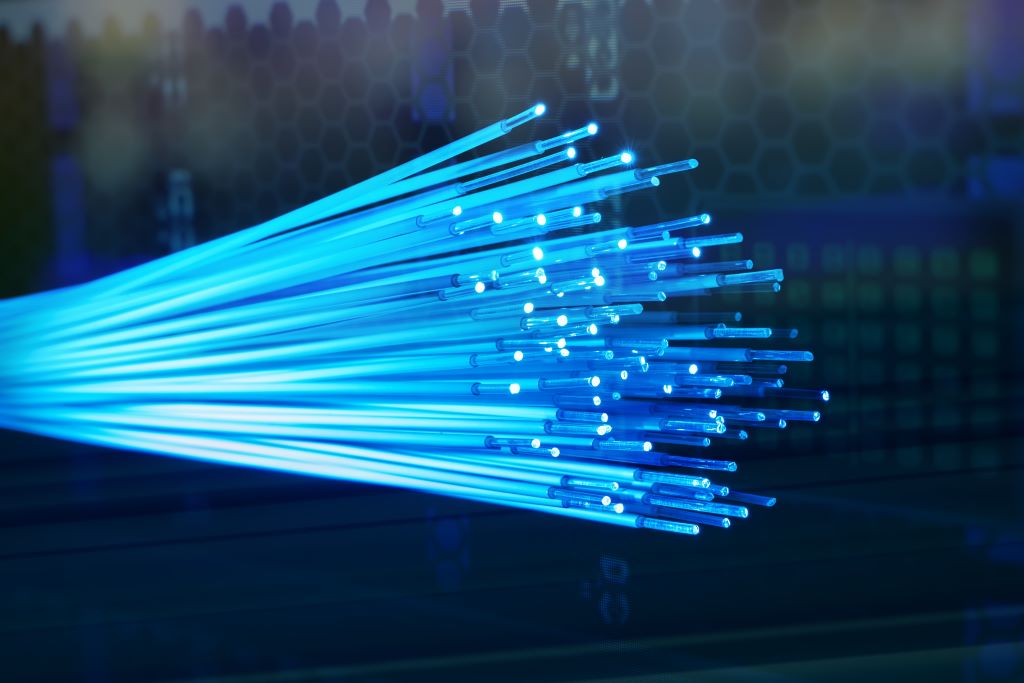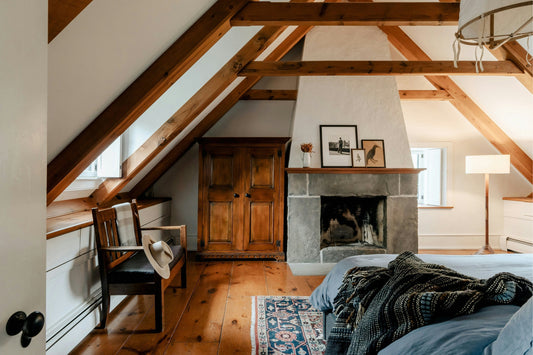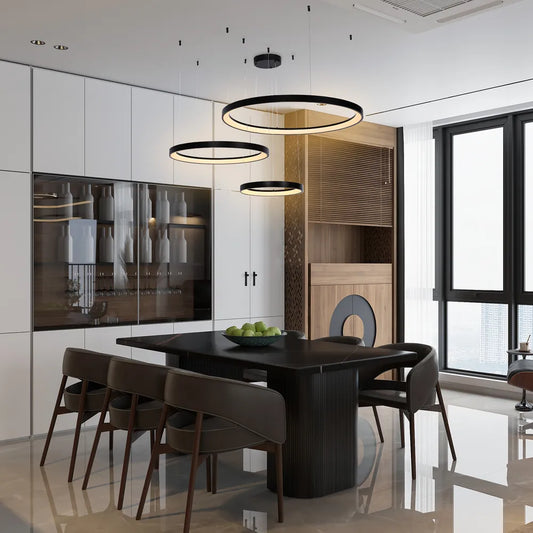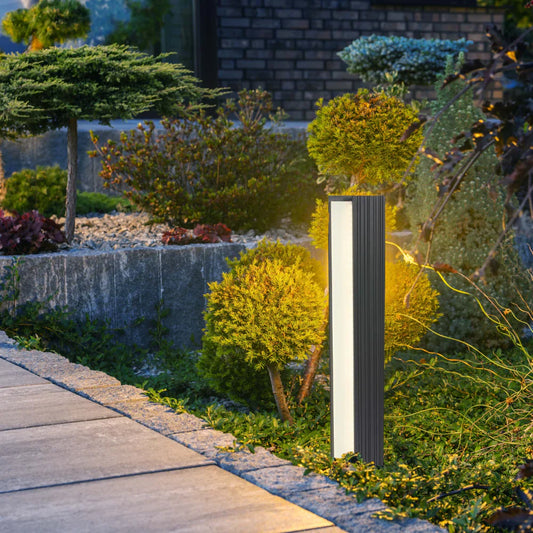
Fiber optic lighting is a type of lighting that uses optical fibers to transmit light. Optical fibers are thin and flexible and can be embedded in any type of construction material. These optical fibers can be used for many purposes, such as lighting, telecommunications, and medical imaging.
Optical fiber lights are also referred to as fiber optic lights, fiber optic lamps, or simply "fiber optic." Fiber optics were initially developed as an alternative to traditional incandescent bulbs because they use very little electricity but produce a very bright light. Fiber optics are also more durable than other types of lighting because they do not burn out easily when exposed to heat or moisture from the outside environment.
What are the Usage Areas of Fiber Optic Lighting?
Fiber optic lighting, known for its versatility and efficiency, employs optical fibers to transmit light from a source to a desired location. This technology offers unique advantages, such as minimal heat emission, precise light control, and the ability to create dynamic color changes. Here are some key areas where fiber optic lighting is commonly used:
Architectural and Decorative Lighting
Accent Lighting: Fiber optics are excellent for highlighting architectural features, artwork, and landscape elements without exposing them to UV light or heat.
Star Ceilings: Often used in home theaters, bedrooms, and commercial spaces to create a starry sky effect on ceilings.
Cove Lighting: Provides soft, ambient lighting in coves, ledges, or recesses in both residential and commercial settings.
Landscape and Outdoor Lighting
Garden Lighting: Safe for outdoor use since fiber optics are waterproof and resistant to temperature fluctuations. Ideal for illuminating pathways, gardens, and water features.
Pool and Spa Lighting: Because fiber optics are electricity-free, they're perfect for underwater lighting in pools and spas, offering both safety and aesthetic appeal.
Museum and Exhibition Lighting
Artwork Illumination: Fiber optic lighting minimizes the risk of heat and UV light damage to sensitive artifacts and paintings, making it a preferred choice for museums and galleries.
Commercial and Retail Spaces
Display Lighting: Highlight merchandise in retail displays without the risk of heat damage or excessive energy consumption.
Signage: Used for vibrant, eye-catching signs that are visible both day and night.
Entertainment and Leisure
Theatrical Lighting: Allows for precise and creative lighting effects on stage without the constraints of traditional lighting systems.
Nightclubs and Bars: Creates dynamic, color-changing atmospheres that enhance the entertainment experience.
Medical and Scientific Applications
Surgical Lights: Provides bright, focused light for medical procedures, minimizing heat exposure to the patient.
Industrial Inspection: Fiber optics can illuminate hard-to-reach areas in machinery and equipment for inspection and maintenance purposes.
Automotive and Transportation
Interior Lighting: Used in vehicles for dashboard illumination, accent lighting, and in aviation for cabin lighting, offering durability and energy efficiency.
Advantages of Fiber Optic Lighting
Safety: No risk of electric shock, making it safe for wet or metallic environments.
Energy Efficiency: Consumes less energy compared to traditional lighting methods.
Flexibility and Creativity: Can be bent and shaped to fit various design needs, allowing for creative lighting solutions.
Durability: Resistant to vibrations, temperature changes, and moisture, making it suitable for a wide range of environments.
Fiber optic lighting's unique properties make it adaptable to a broad array of applications, from enhancing aesthetic appeal in architectural and landscape projects to meeting specific needs in sensitive environments like museums and medical facilities.
Is Fiber Optic Lighting Suitable for Use in Environments with Valuable and Historical Objects?
Yes, fiber optic lighting is highly suitable for use in environments with valuable and historical objects. Its unique characteristics make it an ideal choice for illuminating sensitive items, such as artworks, manuscripts, and artifacts, in museums, galleries, and private collections. Here's why fiber optic lighting is beneficial in such settings:
Minimal Heat Emission
Fiber optic systems transmit light from a source to the desired location without transferring heat. This is crucial for preserving delicate items that can be damaged by the heat emitted from conventional lighting sources.
No UV Radiation
Ultraviolet (UV) light can cause fading and deterioration of materials over time. Fiber optic lighting does not emit UV radiation, protecting valuable objects from potential UV damage.
Precise Illumination
Fiber optics allow for targeted lighting, enabling precise control over where the light is directed. This is particularly useful for highlighting specific details of an object without illuminating the surrounding area unnecessarily.
Flexibility in Design
The flexible nature of fiber optic cables allows them to be installed in tight or awkward spaces, offering creative lighting solutions that can enhance the display of historical objects without being intrusive.
Low Maintenance
Fiber optic lighting systems are durable and have a long lifespan. They require minimal maintenance, which is advantageous in environments where disturbing the objects for maintenance purposes is not desirable.
Safety
Because the light source is remote, fiber optic lighting does not pose a fire risk to sensitive materials. This makes it safer than traditional lighting methods, especially in enclosed display cases or tightly controlled environments.
Conservation
The preservation of historical and valuable objects is a priority for museums and collectors. The non-invasive and protective qualities of fiber optic lighting align with conservation efforts, making it a preferred choice for lighting in such contexts.
Is Fiber Optic Lighting System Suitable for Decorative Use?
Fiber optic lighting system is suitable for decorative use. It is a great solution to the problem of lighting in basements, closets, garages, and other dark spaces.
The fiber optic lighting system consists of a number of strands that are made of glass fibers. These strands are arranged in a spiral pattern and then attached to a light source or a lampshade. The advantage of this type of lighting system is that it can be easily installed without the need for drilling holes through walls or ceilings.
Do Fiber Optic Lighting Systems Save Energy?
Yes, fiber optic lighting systems can save energy and offer several efficiency benefits compared to traditional lighting solutions. Here are the key reasons why fiber optic lighting is considered energy-efficient:
Low Heat Emission
Fiber optic lights transmit light from a single source to various endpoints without generating much heat. This characteristic means less energy is wasted as heat, making the system more efficient than incandescent or halogen bulbs, which convert a significant portion of energy into heat rather than light.
Durable and Long-Lasting
The optical fibers used in these systems are highly durable and have a long lifespan. The light source, often an LED or halogen bulb, can be placed in an accessible location, making it easier to replace or upgrade to more energy-efficient options without needing to replace the entire lighting system. LEDs, in particular, are known for their energy efficiency and longevity, further enhancing the system's overall energy savings.
Targeted Illumination
Fiber optic lighting can be precisely directed to illuminate specific areas or objects, reducing the need for widespread lighting in spaces where it's not needed. This focused approach to lighting ensures that energy is not wasted illuminating areas unnecessarily.
Reduced Maintenance Costs
The durability of fiber optic systems translates into lower maintenance costs and less frequent replacements. Traditional lighting systems, which may require more frequent bulb changes and maintenance, can consume more resources and energy over time, both in terms of the manufacturing of replacement parts and the labor involved in maintaining the system.
No Need for Filters or Reflectors
Unlike some traditional lighting systems that require additional components like filters to adjust the color temperature or reflectors to direct the light, fiber optic systems achieve these effects intrinsically through the properties of the fibers themselves. This reduces the need for extra energy-consuming components.
Safety and Reduced Cooling Costs
The minimal heat emission of fiber optic lighting reduces the risk of fire and the need for cooling in temperature-sensitive environments. In spaces where air conditioning or cooling is used, the lower heat output of fiber optic lighting can contribute to reduced cooling energy consumption.
While fiber optic lighting systems offer significant energy-saving benefits, it's important to consider the initial setup costs and the specific design of the system. In some cases, the upfront investment can be higher than traditional lighting systems, but the long-term energy savings, durability, and low maintenance costs often justify the initial expense. For optimal energy efficiency, pairing fiber optic lighting with energy-efficient light sources like LEDs is recommended.
Does Fiber Optic Lighting Have a Purpose Based on Protecting Human Health?
Yes, fiber optic lighting can have several benefits related to protecting and promoting human health, making it a considerate choice for environments sensitive to health concerns. Here are key aspects where fiber optic lighting contributes positively to human health:
Reduced Heat Emission
Fiber optic systems transmit light without conducting heat, minimizing the risk of burns or fire hazards associated with traditional lighting sources. This feature is particularly beneficial in environments where safety and temperature control are crucial, such as hospitals or care facilities.
No UV Radiation
Unlike some conventional lighting options, fiber optic lighting does not emit ultraviolet (UV) radiation. Prolonged exposure to UV light can lead to skin damage and other health issues. By eliminating UV radiation, fiber optic lighting reduces these health risks, making it suitable for use in both medical settings and public spaces.
Better Visual Comfort
Fiber optic lighting can be designed to provide high-quality, glare-free illumination. This can significantly reduce eye strain and fatigue, especially in environments where individuals are exposed to artificial lighting for extended periods, such as offices or schools. The ability to precisely control the direction and intensity of light ensures that illumination is optimized for visual comfort.
Improved Air Quality
Since fiber optic lighting systems generate minimal heat and no UV radiation, they do not contribute to the degradation of air quality within indoor environments. Some lighting solutions can exacerbate the release of volatile organic compounds (VOCs) from certain materials, but fiber optic lighting's cool operation helps maintain better air quality.
Reduced Flicker and Electromagnetic Emissions
Fiber optic systems are free from the flickering issues that can accompany fluorescent lighting, which has been associated with headaches, migraines, and eye strain. Additionally, because they operate without electricity at the point of illumination, they do not produce electromagnetic emissions, which some people are sensitive to.
Circadian Rhythm Support
With the right configuration, fiber optic lighting can mimic natural daylight patterns, supporting the human body's circadian rhythms. Proper alignment with these natural cycles can improve sleep quality, mood, and overall well-being. This aspect is particularly beneficial in settings with limited natural light exposure, such as hospitals and long-term care facilities.
Applications in Medical and Therapeutic Settings
Given its unique properties, fiber optic lighting is used in various medical and therapeutic applications. It's employed in phototherapy treatments for conditions like jaundice in newborns, where specific light frequencies are used for therapeutic benefits without the risks associated with heat and UV radiation.
What is the Difference Between the Cable Model Used in Fiber OptiK Lighting and the Cables of Other Lighting Systems?
Fiber optic lighting systems and traditional electrical lighting systems use fundamentally different types of cables and methods for transmitting light or electricity. Here's an overview of the key differences between the cable models used in fiber optic lighting and the cables used in other lighting systems:
Fiber Optic Lighting Cables
- Material: Fiber optic cables are made from strands of glass or plastic fibers that transmit light from one end to the other. These fibers use the principle of total internal reflection to guide light along the cable’s length without significant loss of intensity, even over long distances or when the cable is bent.
- Transmission Medium: The transmission medium in fiber optic cables is light. These systems use a light source, such as an LED or halogen lamp, located at one end of the fiber optic cable. The light travels through the core of the fiber optic strand to illuminate a specific area or object at the other end.
- Heat and Electricity: Fiber optic cables do not conduct electricity and generate minimal heat along their length. This makes them safe for use in sensitive environments, including areas where heat and electrical conductivity pose risks, such as around water or flammable materials.
- Safety and Installation: Due to the absence of electrical currents in the fibers, fiber optic lighting is considered very safe. It can be installed in wet locations, such as pools and spas, without the risk of electric shock.
Cables in Traditional Electrical Lighting Systems
- Material: Cables used in traditional lighting systems are typically made from copper or aluminum conductors, insulated with materials like PVC, rubber, or Teflon. These materials conduct electricity from the power source to the lighting fixture.
- Transmission Medium: The transmission medium in these cables is electrical current. Electrical energy from the power source travels through the conductors to the lighting fixture, where it is converted into light by the lamp or bulb.
- Heat and Electricity: Electrical cables can generate heat due to resistance in the conductors, and they carry a risk of electrical shock if not properly insulated or if damaged. The generation of heat can be a consideration in the placement and safety of these lighting systems.
- Safety and Installation: Installation of traditional electrical lighting systems must comply with safety standards and building codes to prevent fire hazards and electrical shock. This includes using the correct type of cable for the intended application and environment (e.g., outdoor-rated cables for exterior lights).
What Harmful Rays Do Fiber Optic Systems Contain?
Fiber optic lighting systems are distinguished by their use of light, rather than electrical currents, to illuminate spaces. These systems are generally considered very safe and have several advantages over traditional lighting systems, especially in terms of reducing exposure to potentially harmful rays. Here’s a closer look at the safety aspects concerning harmful rays in fiber optic systems:
Ultraviolet (UV) Rays
Fiber Optic Systems: Typically, fiber optic lighting does not emit UV rays. The light source might generate some level of UV light, but the fibers themselves do not transmit UV radiation effectively. Moreover, the light source is often enclosed in a way that any UV radiation is contained and not emitted into the environment. This makes fiber optic systems safe for illuminating sensitive objects, like artworks or artifacts, which could be damaged by UV exposure.
Infrared (IR) Radiation
Fiber Optic Systems: Similar to UV rays, the transmission of infrared (IR) radiation through fiber optic cables is minimal. While the light source might produce IR radiation, the optical fibers are designed to carry visible light. This results in very little, if any, IR radiation being emitted from the end of the fiber, minimizing heat emission and making it safe for various applications.
Visible Light
Fiber Optic Systems: The primary type of radiation emitted by fiber optic systems is in the visible spectrum, which is generally safe for both objects and human exposure under normal conditions. The ability to control the intensity and color of the light further reduces any risk associated with overexposure to bright light.
Safety Considerations
Fiber Optic Lighting: One of the primary safety considerations for fiber optic lighting relates to the light source itself. While the fibers are safe, the light source can get hot and, depending on the type, might emit low levels of UV or IR radiation. However, these sources are typically encased and located away from direct contact with people or sensitive objects.
Can the Intensity of Light be Adjusted to the Desired Level in Fiber Optic Systems?
Yes, the intensity of light in fiber optic systems can be adjusted to the desired level, offering flexibility in lighting design and control. Adjusting the light intensity in fiber optic lighting involves several methods, each suitable for different setups and applications. Here are the primary ways to regulate light intensity in fiber optic systems:
1. Adjusting the Light Source
The most straightforward method to control the intensity of light in a fiber optic system is by adjusting the light source itself. This can be achieved in several ways:
Dimmable Light Sources: Using a light source that is dimmable, such as LED or halogen lamps equipped with a dimming mechanism, allows for easy adjustment of light intensity.
Variable Power Supplies: For systems powered by light sources that accept variable input voltages, adjusting the power supply can change the light output, thereby controlling the brightness.
2. Optical Attenuators
Optical attenuators can be used within the fiber optic system to reduce the light signal's strength without significantly altering other properties of the light. They are particularly useful in precise applications where fine control of light intensity is required.
3. Changing the Fiber Optic Cable Type
The type of fiber optic cable used can influence the intensity of light at the output. Using cables with different core diameters, numerical apertures, or fiber materials can alter the amount of light transmitted. Switching to a fiber with higher loss characteristics can reduce the light intensity.
4. Adjusting the Number of Fibers
In systems where multiple fibers are used to transmit light to a single point, adjusting the number of fibers in use can control the overall intensity. Removing some fibers will decrease the light output, while adding more fibers will increase it.
5. Using Filters
Placing filters at the end of the fiber optic cables or in front of the light source can attenuate the light intensity. Filters can selectively reduce the amount of light passing through based on its properties, such as color or brightness.
6. Light Distribution Techniques
Adjusting how light is distributed from the source to the fibers can also affect intensity. For example, using a light source with a built-in mechanism to spread or concentrate light before it enters the fibers can allow for intensity adjustments.
Flexibility and Applications
The ability to adjust the light intensity in fiber optic systems adds to their versatility, making them suitable for various applications ranging from mood lighting in architectural designs to precise lighting in museums where artifact preservation is critical. The method chosen for adjusting light intensity will depend on the specific requirements of the application, including the need for uniformity, the type of light source used, and the level of control desired.
What is the Difference between Fiber Optic Lighting System and Functional Lighting?
The distinction between fiber optic lighting systems and functional lighting lies primarily in their design intentions, applications, and the way they emit light. Understanding these differences is crucial for selecting the appropriate lighting solution for specific needs and environments.
Fiber Optic Lighting System
Design and Operation:
Fiber optic lighting utilizes optical fibers to transmit light from a central source to various output points. This system comprises a light source (often LED or halogen), a transmission medium (the optical fibers), and the end fittings or fixtures where the light emerges.
The light in fiber optic systems travels through the fibers via the principle of total internal reflection, allowing for versatile and creative lighting designs. The fibers themselves do not generate light but act as conduits for light.
Applications:
Often used for decorative and accent lighting purposes. It's ideal for creating dramatic effects, such as starry skies in ceilings, illuminated pathways, or highlighting architectural features and artwork without exposing them to heat or UV radiation.
Widely used in situations where electricity cannot be used directly due to safety concerns, like in pools or museums with sensitive artifacts.
Advantages:
Safe for wet and hazardous environments since the fibers do not conduct electricity.
Minimizes UV and IR radiation exposure, protecting sensitive objects or areas from damage.
Allows for creative and flexible lighting designs, capable of changing colors and intensity without affecting the temperature of the illuminated object.
Functional Lighting
Design and Operation:
Functional lighting is designed primarily for illumination, ensuring that spaces are adequately lit for visibility and safety. It encompasses a wide range of lighting fixtures, including overhead lights, downlights, task lamps, and more.
This category uses direct lighting sources, such as incandescent, fluorescent, or LED bulbs, to provide ambient, task, or general lighting. The fixtures are directly connected to the electrical system and emit light to serve practical purposes.
Applications:
Essential for everyday activities in residential, commercial, and industrial settings. It includes lighting for reading, cooking, working, and general navigation within a space.
Designed to meet specific lighting standards and requirements, ensuring that activities can be performed safely and comfortably.
Advantages:
Provides broad and even lighting coverage, essential for performing tasks and ensuring safety in various environments.
Often designed with energy efficiency in mind, especially in fixtures using LED technology.
Can be tailored to specific tasks and settings, with options for adjustable brightness and color temperature to enhance functionality and comfort.



